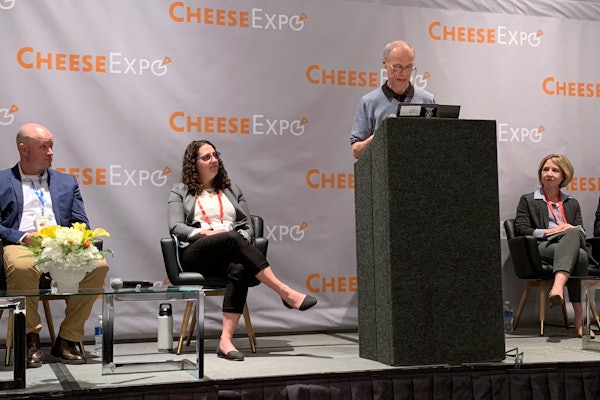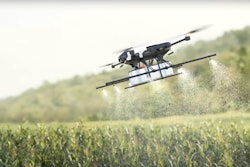
CDC is advising that U.S. consumers not eat any romaine lettuce, and retailers and restaurants not serve or sell any, until we learn more about the outbreak. This investigation is ongoing and the advice will be updated as more information is available.
- Consumers who have any type of romaine lettuce in their home should not eat it and should throw it away, even if some of it was eaten and no one has gotten sick.
- This advice includes all types or uses of romaine lettuce, such as whole heads of romaine, hearts of romaine, and bags and boxes of precut lettuce and salad mixes that contain romaine, including baby romaine, spring mix, and Caesar salad.
- If you do not know if the lettuce is romaine or whether a salad mix contains romaine, do not eat it and throw it away.
- Wash and sanitize drawers or shelves in refrigerators where romaine was stored. Follow these five steps to clean your refrigerator.
- Restaurants and retailers should not serve or sell any romaine lettuce, including salads and salad mixes containing romaine.
- Take action if you have symptoms of an E. coli infection:
- Talk to your healthcare provider.
- Write down what you ate in the week before you started to get sick.
- Report your illness to the health department.
- Assist public health investigators by answering questions about your illness.
Thirty-two people infected with the outbreak strain of Shiga toxin-producing E. coli O157:H7 have been reported from 11 states. CDC says:
- Illnesses started on dates ranging from October 8, 2018 to October 31, 2018.
- Thirteen people were hospitalized, including one person who developed hemolytic uremic syndrome, a type of kidney failure. No deaths have been reported.
- The Public Health Agency of Canada has identified 18 ill people infected with the same DNA fingerprint of E. coli O157:H7 bacteria in two Canadian provinces: Ontario and Quebec.
- Epidemiologic evidence from the United States and Canada indicates that romaine lettuce is a likely source of the outbreak.
- Ill people in this outbreak were infected with E. coli bacteria with the same DNA fingerprint as the E. coli strain isolated from ill people in a 2017 outbreak linked to leafy greens in the United States and to romaine lettuce in Canada.
The current outbreak is not related to a recent multistate outbreak of E. coli O157:H7 infections linked to romaine lettuce.
Updated on November 27: Multistate outbreak of E. coli O157:H7 infections likely linked to products harvested in California
FDA, along with CDC, state and local agencies, is investigating a multistate outbreak of E. coliO157:H7 illnesses likely linked to romaine lettuce grown in California this fall. The Public Health Agency of Canada (PHAC) and Canadian Food Inspection Agency are also coordinating with U.S. agencies as they investigate a similar outbreak in Canada.
FDA has been conducting a traceback investigation, reviewing shipping records and invoices to trace the supply of romaine from the place where ill people were exposed to the place where that romaine was grown.
Preliminary traceback information indicates that ill people in several areas across the country were exposed to romaine lettuce harvested in California. Specifically, current evidence indicates this romaine was harvested in the Central Coast growing regions of northern and central California.
Romaine harvested from locations outside of the California regions identified by the traceback investigation does not appear to be related to the current outbreak.
There is no recommendation for consumers or retailers to avoid using romaine lettuce that is certain to have been harvested from areas outside of the Central Coast growing regions of northern and central California. For example, romaine lettuce harvested from areas that include, but are not limited to the desert growing region near Yuma, the California desert growing region near Imperial County and Riverside County, the state of Florida, and Mexico, does not appear to be related to the current outbreak. Additionally, there is no evidence hydroponically- and greenhouse-grown romaine is related to the current outbreak.
During this new stage of the investigation, it is vital that consumers and retailers have an easy way to identify romaine lettuce by both harvest date and harvest location. Labeling with this information on each bag of romaine or signage in stores where labels are not an option would easily differentiate for consumers romaine from unaffected growing regions.
Recommendation:
Based on discussions with producers and distributors, romaine lettuce entering the market will now be labeled with a harvest location and a harvest date or labeled as being hydroponically- or greenhouse-grown. If it does not have this information, you should not eat or use it.
If romaine lettuce does have this labeling information, we advise avoiding any product from the Central Coast growing regions of northern and central California. Romaine lettuce from outside those regions need not be avoided.
Romaine lettuce that was harvested outside of the Central Coast growing regions of northern and central California does not appear to be related to the current outbreak. Hydroponically- and greenhouse-grown romaine also does not appear to be related to the current outbreak. There is no recommendation for consumers or retailers to avoid using romaine harvested from these sources.
Updated on November 28: FDA Investigating Multistate Outbreak of E. coli O157:H7 Infections Likely Linked to Romaine Lettuce Grown in California
FDA, along with CDC, state and local agencies, is investigating a multistate outbreak of E. coli O157:H7 illnesses likely linked to romaine lettuce grown in California this fall. The Public Health Agency of Canada (PHAC) and Canadian Food Inspection Agency are also coordinating with U.S. agencies as they investigate a similar outbreak in Canada. FDA has been conducting a traceback investigation, reviewing shipping records and invoices to trace the supply of romaine from the place where ill people were exposed to the place where that romaine was grown.
Here is the latest update from November 28, 2018:
The specific California counties FDA identified in the traceback investigation are:
- Monterey
- San Benito
- San Luis Obispo
- Santa Barbara
- Santa Cruz
- Ventura
Romaine harvested from locations outside of the California regions identified by the traceback investigation does not appear to be related to the current outbreak.


















